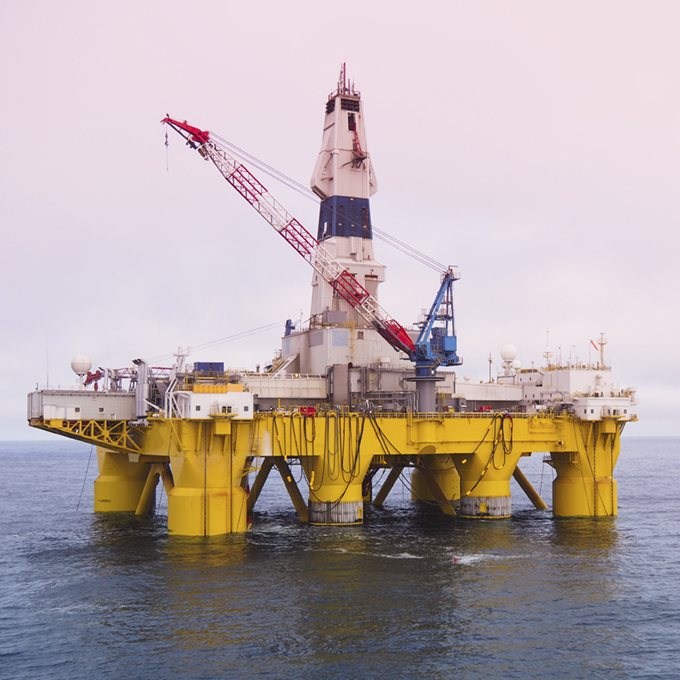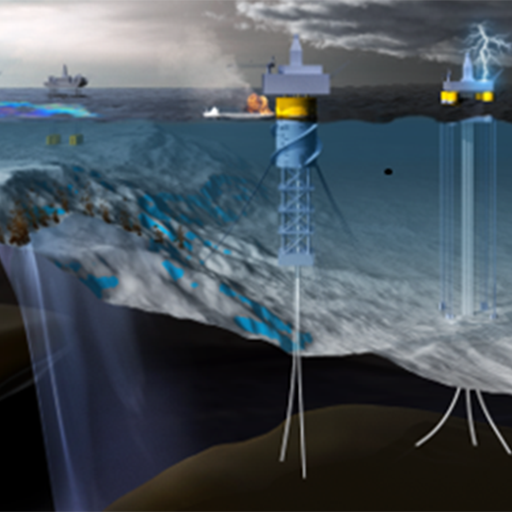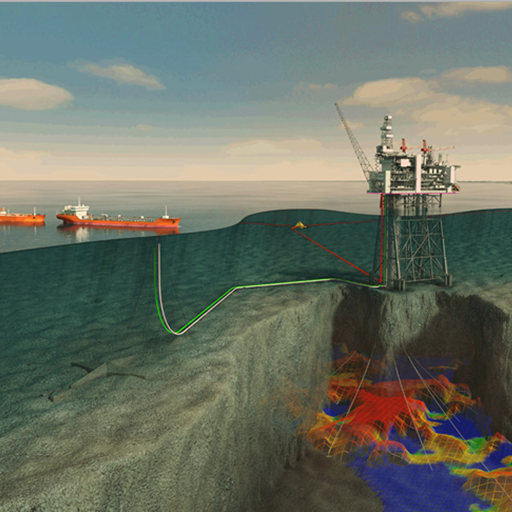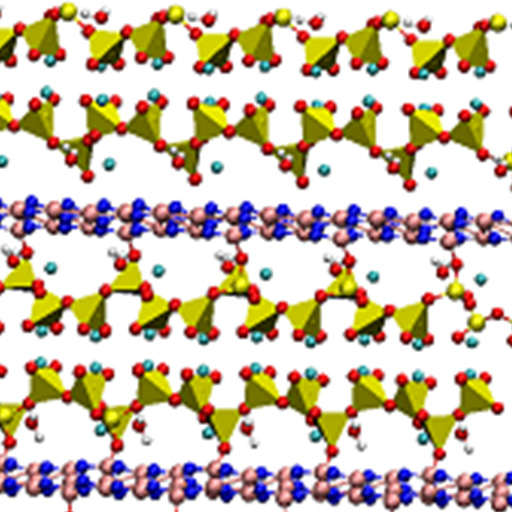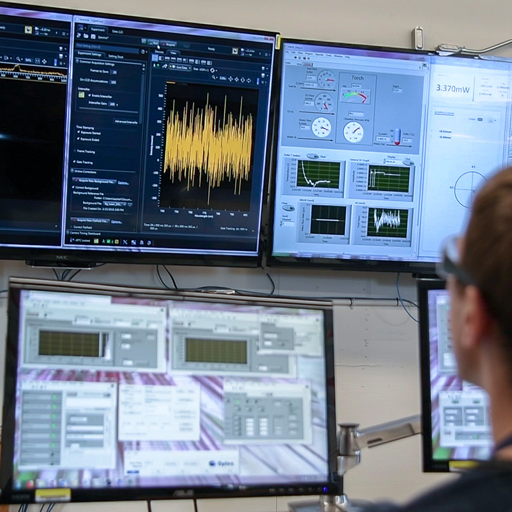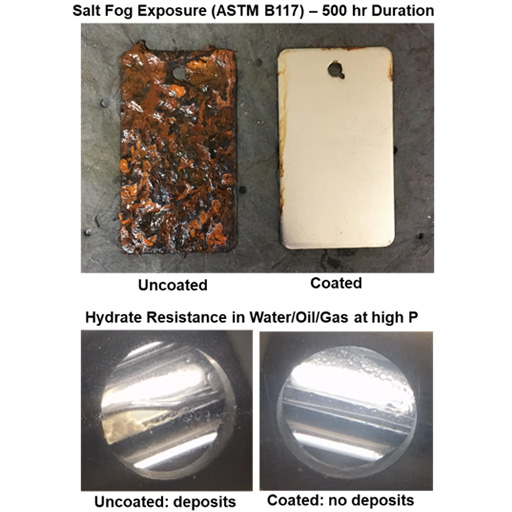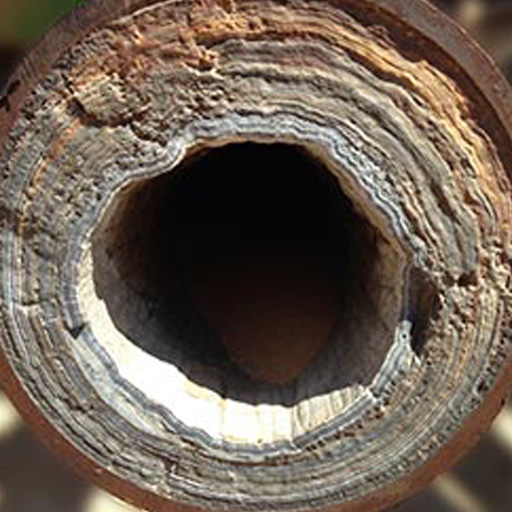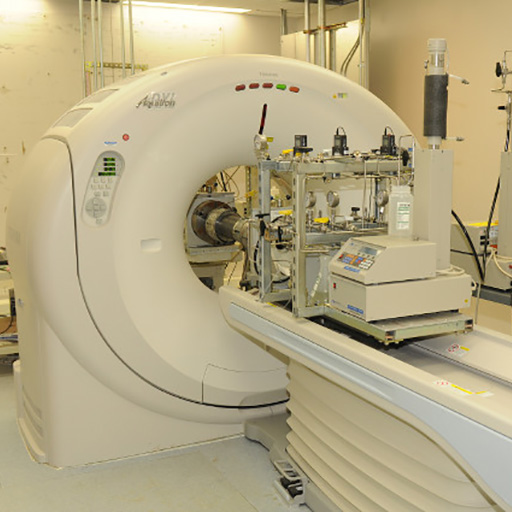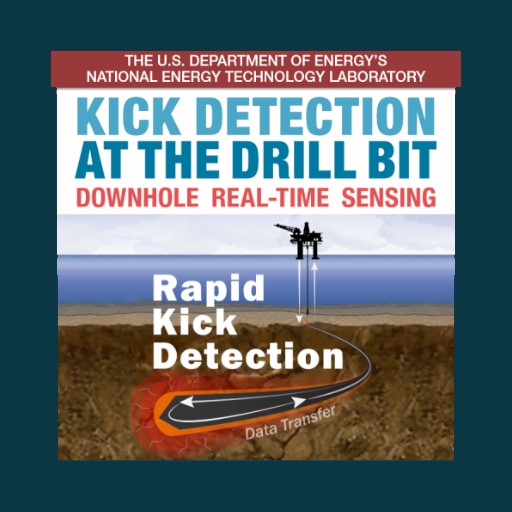Overview
Lightweight cements are used in many wells. However, they are increasingly used in deepwater wells and are the system of choice for high stress environments and shallow flow conditions such as those prevalent in the Gulf of Mexico. Currently, there is little information regarding the stability of lightweight cement systems under wellbore conditions. Operators and regulators do not have the information to predict or understand the properties of lightweight cement as it is placed in the well and at bottom hole conditions. Knowledge about the integrity and longevity of wellbore cements over decadal is poor, with little or no data or tools available for researching the situation. As wells are increasingly repurposed for secondary and tertiary purposes, ensuring that cement remains a barrier to subsurface flow is key. Research in this project addressed these challenges by improving the science base for wellbore integrity as it relates to the near-term and long-term efficacy of lightweight cements. Because cement stability is critical to ensure that gas will not break out of the slurry, cement must be tested under conditions that simulate placement in the well and situations that exist in post placement. This project determined lightweight cement stability at various depths in the well and correlated those test results with current of atmospheric testing.
Outcomes
NETL researched the physical and chemical behavior of typical wellbore cements to better understand how various cement formulations perform, with emphasis on potential failure pathways and remediation technologies. Researchers performed laboratory characterization studies of commonly used industry standard formulations of foam cements and have obtained the first computed tomography (CT) images of foamed cement systems. The CT characterization of the samples allowed quantitative analysis of physical properties and structures within the cement. The researchers also developed a reliable methodology to probe the microstructure of foamed cements under in-situ conditions. The team used this methodology to determine stability of foamed cement systems at various depths in the subsurface and correlate those properties with the current method of atmospheric testing. Initial results from this study’s atmospheric foamed cement experiments are summarized in Computed Tomography and Statistical Analysis of Bubble Size Distributions in Atmospheric-Generated Foamed Cement.
The use of CT imaging and statistical analysis is an effective method of characterizing the microstructure of foamed cement. Commonly held assumptions that foamed cements with higher foam qualities (entrained-nitrogen fractions) have higher bubble connectivity, higher permeability, lower foam stability, and lower compressive strength were confirmed and published.
The atmospheric foamed cement generation method [outlined in API RP 10B-4 (2015)] and the current foamed generation methods used in industrial-scale foamed cementing equipment do not provide similar bubble size distributions (BSD) in foamed cements of similar foam qualities. When comparing samples of a similar foam qualities, the atmospheric foamed cement generation method in API RP 10B-4 (2015) creates an average bubble size considerably larger than field foamed cementing equipment. Foam cement samples generated with field equipment display higher foamed stability and lower permeability compared to samples generated at atmospheric conditions in the laboratory.
Results of the analytical data generated with atmospherically generated foamed cement samples confirmed the current industry guideline of limiting the in-situ target design of foamed cement nitrogen fraction to 30 to 35 percent. Above this level, atmospherically generated foamed cements display significantly increased permeability and decreased foamed stability. The measured mechanical properties of both field-generated and atmospherically-generated foamed cements designed within current industry guidelines of a maximum 30 to 35 percent nitrogen fraction are suitable for applications to isolate subsurface formations in oil and gas well cementing operations.
The primary outcome of phase 1 of this project was in-situ characterization foam cement. Other key outcomes included:
- The first high resolution x-ray CT three dimensional images of foamed cement across a range of foam qualities and pressures to provide a better understanding of foamed cement.
- The finding that the foam is changing while scanned due to buoyancy caused by bubble migration. A series of scans were conducted to obtain a time lapse of this and gain insight into the behavior.
- An Assessment of Research Needs Related to Improving Primary Cement Isolation of Formations in Deep Offshore Wells identifies research needs in the cementing of offshore wells.
- Signed a non-disclosure agreement with Schlumberger to partner in generating foamed cement at a variety of conditions and directly collect the cement at in-situ pressures for real-time imaging in the CT scanners.
This project is continuing as Phase 2 Well Cement Behavior and Gas Migration.
Research Products
Researchers Working to Connect the Dots Between Bubbles and Viscosity in Foamed Cement
NETL News Release
October 2019
https://www.netl.doe.gov/node/9310
Laboratory Foamed-Cement-Curing Evolution using CT Scanning: Insights from Elevated-Pressure Generation
SPE Drilling & Completion
Dalton, L., Brown, S., Moore, J., Crandall, D., Gill, M.
March 2019
An Assessment of the Physical and Mechanical Properties of Foamed Cement Generated at a Field Site vs. Laboratory
Society of Petroleum Engineers, SPE Annual Technical Conference and Exhibition, September 24-26, 2018, Dallas, Texas, USA.
Barbara Kutchko (National Energy Technology Laboratory / Department of Energy), Igor Haljasmaa (AECOM), Jim Fazio (AECOM)
September 2018
https://www.onepetro.org/conference-paper/SPE-191621-MS
Physical and Mechanical Properties of Field-Generated Foam Cements: Implications for Cement Property Prediction and Modeling
Society of Petroleum Engineers, SPE Deepwater Drilling and Completions Conference, September 14-15, 2016, Galveston, Texas, USA.
Connor Gieger (ORISE-NETL), James Fazio (AECOM-NETL), Richard Spaulding (NETL), Barbara Kutchko (NETL), Gunnar DeBruijn (Schlumberger)
September 2016
https://www.onepetro.org/conference-paper/SPE-180333-MS
DOE Foamed-Cement Research Is Changing Industry
NETL News Release
July 2016
https://www.netl.doe.gov/newsroom/news-releases/news-details?id=fcdf48b7-097d-4904-9fe7-b9b8f10adbd9
Research Advances Foamed Cement Applications
Journal of Petroleum Technology
April 2016
http://www.offshore-mag.com/articles/print/volume-76/issue-4/drilling-and-completion/research-advances-foamed-cement-applications.html
Data Science Methods to Support Multi-Scale Modeling of Wellbore Integrity
Presented at the CoDA Conference, Santa Fe, NM, Mar 2–4, 2016.
Glosser, D.; Rose, K.; Bauer, J.; Kutchko, B.; Benge, G.; Crandall, D.; Ley, T.
Wellbore Integrity Assurance with NETL’s Safe-Cementing Research
Barbara Kutchko, Ph.D.
February 2016
https://edx.netl.doe.gov/dataset/wellbore-integrity-assurance-with-netl-s-safe-cementing-research
Comparison of Atmospheric, Laboratory, and Field-Generated Foamed Cements
Presented at the SPE 2015 Eastern Regional Meeting, Morgantown, WV, Oct 13–15, 2015.
Gill, M.; Moore, J.; Dalton, L.; Spaulding, R.; Gieger, C.; Haljasmaa, I.; Crandall, D.; Kutchko, B.
Geology researcher shares her passion for safer energy production and therapeutic riding
DOE Pulse, 2015.
Dr. Barbara Kutchko
https://web.ornl.gov/info/news/pulse/no439/profile.shtml
World Trends and Technology for Offshore Oil and Gas Operations
Cover story of the Offshore Magazine, January 2015.
https://digital.offshore-mag.com/offshoremag/201501?pg=1#pg1
Let Us Now Consider Cement
Innovation, 2015.
http://www.innovation-america.org/archive/
Foamed cement may help ensure wellbore integrity in deepwater
Completion technology evolves to impact efficiency, effectiveness
Hart’s E&P Magazine, June 2014.
https://www.hartenergy.com/exclusives/completion-technology-evolves-impact-efficiency-effectiveness-20196
Evaluation of the Effect of Flow on Pressurized Foamed Cement Void Distributions
Presented at the 6th International Conference on Porous Media and Annual Meeting of the International Society for Porous Media, Milwaukee, WI, May 27–30, 2014.
Moore, J.; Crandall, D.; McIntyre, D.; Gill, M.; Kutchko, B.
Research Funded by DOE/RPSEA Advances Ultradeepwater Technology
Journal of Petroleum Technology
Roy Long, National Energy Technology Laboratory, United States Department of Energy
April 2014
https://pubs.spe.org/en/jpt/jpt-article-detail/?art=1852
NETL Boasts State-of-the-Art Capabilities for Cement Research
E&P Focus, 2014.
https://www.netl.doe.gov/oil-gas/natural-gas-resources
Wellbore Cement: Research That Begins Where the Sidewalk Ends
Cement Barriers: Assessment of Foamed Cement Systems used in Deep Offshore Wells
Invited Technical Presentation to Baker Hughes, Houston, TX, Sept 2013.
Kutchko, B.; Crandal, D.; Gill, M.; Spaulding, R.; Haljasmaa, I.; Strazisar, B.; Rosenbaum, E.; McIntyre, D.; Benge, G.; Cunningham, E.; DeBruijn, G.; Gardner, C.; Shine, J.
Cement Barriers: Assessment of Foamed Cement Systems used in Deep Offshore Wells
Presented at the 7th Annual Gulf of Mexico Deepwater Technical Symposium, New Orleans, LA, Aug 2013.
Kutchko, B.; Crandal, D.; Gill, M.; Spaulding, R.; Haljasmaa, I.; Strazisar, B.; Rosenbaum, E.; McIntyre, D.; Benge, G.; Cunningham, E.; DeBruijn, G.; Gardner, C.; Shine, J.
Assessment of Foamed Cement Systems used in Deep Offshore Wells (GOM)
Invited Technical Presentation to American Petroleum Institute (API) Exploration and Production Spring Standards Conference on Oilfield Equipment and Materials, Participating on Subcommittee on Oil Well Cements (SC 10) 2013, Washington, DC, June 24-28, 2013.
Kutchko, B.; Crandal, D.; Gill, M.; Spaulding, R.; Haljasmaa, I.; Strazisar, B.; Rosenbaum, E.; McIntyre, D.; Benge, G.; Cunningham, E.; DeBruijn, G.; Gardner, C.; Shine, J.
An Assessment of Research Needs Related to Improving Primary Cement Isolation of Formations in Deep offshore Wells (NETL-TRS-3-2012)
Invited presentation to the Drilling Engineering Association (DEA), Houston, TX, Mar 20, 2013.
Kutchko, B.; Crandal, D.; Gill, M.; Spaulding, R.; Haljasmaa, I.; Strazisar, B.; Rosenbaum, E.; McIntyre, D.; Benge, G.; Cunningham, E.; DeBruijn, G.; Gardner, C.; Shine, J.
Reducing Risks & Mitigating Impacts Associated with Extreme Offshore Hydrocarbon Development
Presented at the NETL-RUA Spring Meeting, Mar 2013.
Kutchko, B.; Rose, K.
Assessment of Foamed Cement Systems used in Deep Offshore Wells (GOM)
Invited presentation to the American Petroleum Institute (API) Exploration & Production Winter Standards Meeting, New Orleans, LA, Jan 21-25, 2013.
Kutchko, B.; Crandal, D.; Gill, M.; Spaulding, R.; Haljasmaa, I.; Strazisar, B.; Rosenbaum, E.; McIntyre, D.; Benge, G.; Cunningham, E.; DeBruijn, G.; Gardner, C.; Shine, J.
Explore research products that are related to this project.
See related Phase 2 projects.
*Photo Source: NETL
3-D renderings of a 10.4 mm3 digital subsection of 10% foam quality cement sample. (Top to bottom and left to right). Opaque grayscale cement cube. Orthoslices of solid cube with largest bubbles. Largest bubbles in data set that sum to 10% of the total void space in the sample. The next largest bubbles, summing again to 10% of the total void volume. The mean bubbles, between the largest and the smallest in the sample set. The smallest half of the bubbles.
*Photo Source: NETL
The upper left image is a grayscale rendering of a cement sample. In the other images of the same sample, the red dots are the largest gas bubbles that make up 10% of the volume followed by sequentially smaller yellow, green, blue, indigo, and violet bubbles.
Contacts
Barbara Kutchko
Principal Investigator
Kelly Rose
Offshore Portfolio Lead
Roy Long
Offshore Portfolio Technical Manager
Effective Resource Development
Alexandra Hakala
Senior Fellow (Detail)
Geological & Environmental Systems
David Alman
Associate Director
Materials Engineering & Manufacturing



